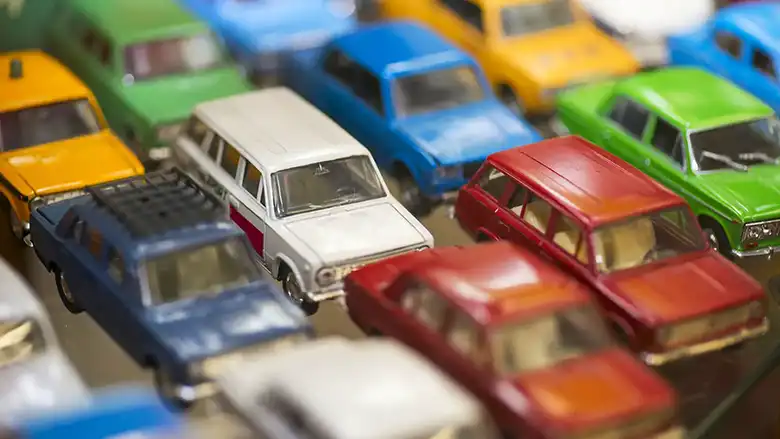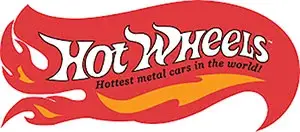
The world of diecast miniatures
The world of diecast miniatures is fascinating. Who never played with diecast miniatures as a child? And this fascination that arises in childhood ends up transferring to the adult world. Collectors around the world are always “hunting” for new releases, or looking for those miniatures from their childhood. Anyone who is a collector understands it very well.
The term diecast is derived from the process of producing miniatures by die-casting, also known as die casting. Die casting is a process in which molten metal alloy is forced under high pressure into a mold. It is the same process used for products made of plastic.
Most miniatures are made of metal, plastic and rubber. The most used metal is ZAMAK, which is a generic name for several types of metal alloys with a melting point between 385oC and 485oC. The name comes from Zink-Aluminium-Magnesium-Kupfer (Zink, Aluminum, Magnesium and Copper in German).
The miniatures are produced in numerous different scales. Some of the most popular: 1/18, 1/24, 1/43, 1/64. But what is scale? The scale represents how many times the miniature is smaller than the real vehicle. For example, if a vehicle is 4.80m long, your 1/18 scale miniature will be approximately 26cm (4.80m / 18).
Want to understand better? Click here to read more about scales.

The first manufacturers started making miniatures in the early 20th century. Some of the first manufacturers were Meccano (Dinky Toys) in the UK and Dowst Brothers (Tootsietoys) in the US. These early models were very basic, with no interior and, because the metal was of low quality probably due to impurities, it broke easily. That’s why it’s so hard to find miniatures in good conditions made before WWII.
Lesney began manufacturing diecast miniatures in 1947. The popular Matchbox 1-75 line was so named because there were always 75 different models in each series and because they were packaged in a small box that resembled a matchbox. At the time, the name became so popular that any diecast cars were called Matchbox.


In the 1950s, popularity grew and more brands appeared on the market. One of them was Corgi, produced by Mettoy, which innovated by making miniatures with an interior and transparent plastic on the windows.
In 1968 Hot Wheels was launched in the United States by Mattel. The brand grew quickly, becoming one of the best-selling brands in the world and directly clashing with Matchbox in popularity.

In the 1970s, several manufacturers began producing miniature trucks and other commercial vehicles, which quickly became very popular. Matchbox re-released its “Yesteryear” line by producing several versions of the Ford T Van Y-12. Corgi did the same in the early 1980s producing over 50 versions of the 1920s Thornycroft truck.
In the 1980s it became apparent that there was a large share of the adult market who were buying diecast miniatures as collectibles. At the same time, companies like McDonald’s, Sears Roebuck, Kodak and Texaco were ordering miniatures with their brands to distribute as promotional items or licensing their brands so manufacturers could exploit them. An early example of this was the American Airlines bus made by Matchbox, an idea quickly copied by other airlines.
But despite the popularity, many manufacturers went bankrupt in the 1980s. Meccano (Dinky), Matchbox and Corgi closed their UK factories within three years, which essentially reflected the economic climate at the time when it became very difficult for products manufactured in the UK to compete in the world market. At the same time, Mattel had already transferred most of its production to Asia. Matchbox was bought by a Hong Kong conglomerate called Universal Holdings, which moved its production to Macau. It was eventually sold to Mattel in 1997.

From the ashes of Matchbox’s bankruptcy emerged Lledo, a company created by one of Matchbox’s former partners, Jack Odell. Odell believed that British miniatures could still be profitably produced in England. Lledo took over part of the Matchbox factory and presented its line of diecast miniatures “Models of Days Gone” in 1983. Its first serie included the re-release of some of the most popular first and second generation miniatures from Matchbox’s “Models of Yesteryear” line. Lledo models were very popular collectibles in the 1980s leading to a period of diversification (including the “Vanguards” line of post-war classic British vehicles). However, in the 1990s they were swallowed up by other brands and in 2002 they filed for bankruptcy. Parts of its line were acquired by Corgi, which transferred production to China.
Burago (initially Martoys), was founded in 1974 in Italy. In the 1990s, its line of 1/18 scale miniatures grew rapidly and they became the main manufacturer to offer this scale, initially offered by Schuco, Gama and Polistil.
Since vehicle miniatures became popular, several other brands have emerged such as Greenlight, Johnny Lightning, Kyosho, Tomica, M2 Machines, Siku, Welly, Maisto, Jada, among others. Some managed to consolidate, others disappeared. But what never ran out was the passion and fascination of children and adults all over the world for this fascinating world of miniature vehicles.